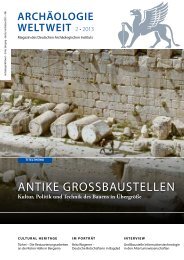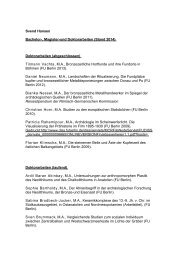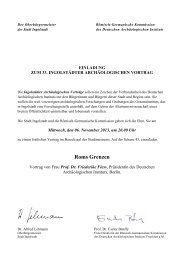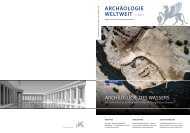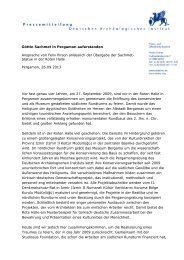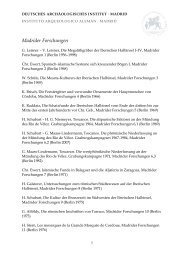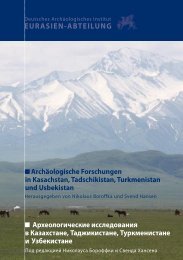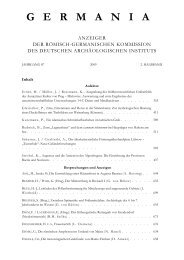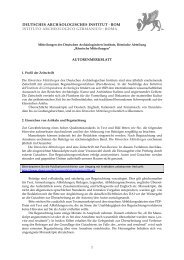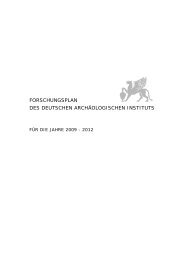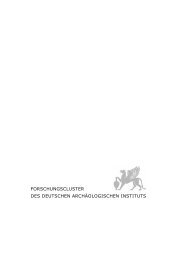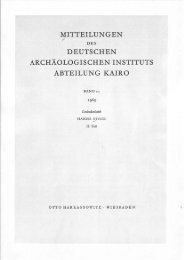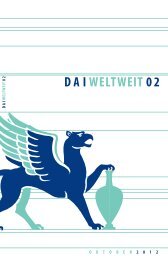Untitled - Deutsches Archäologisches Institut
Untitled - Deutsches Archäologisches Institut
Untitled - Deutsches Archäologisches Institut
You also want an ePaper? Increase the reach of your titles
YUMPU automatically turns print PDFs into web optimized ePapers that Google loves.
A newly discovered basilica at the pilgrimage site of<br />
the Archangel Michael at Germia (Galatia)<br />
In 2011, the Germia survey achieved another highlight with the discovery of a hitherto<br />
unknown basilica. The church lies outside the settlement on higher ground with a view of the<br />
2000 m high Dindymon mountain range. A significant quantity of marble<br />
was found at this site, including fragments of acanthus-leaf decoration,<br />
which suggested a building of elaborate architecture. This has now been<br />
confirmed by geophysical prospection (Fig. below) that was conducted<br />
by E. Erkul and H. Stümpel (Kiel).<br />
In the elevated eastern half of the survey area, a three-aisled basilica has<br />
been detected. A broad central nave terminates in an apse to the east;<br />
narrower and shorter side aisles end in square rooms adjoining the apse.<br />
At the opposite western end lies a narthex that is wider than the basilica,<br />
a feature not uncommon in the region.<br />
To the west, below the church, a large rectangular open space can be<br />
made out in the left half of the survey area. It appears to be enclosed<br />
on all sides by rows of rooms. The rooms along the west side show<br />
particularly well and seem to flank a central passage. The latter lies in<br />
the axis of the complex opposite the church and would have formed the<br />
main entrance. The symmetrical layout indicates that the entire ensemble<br />
of buildings was jointly planned. A<br />
substantial quantity of early Byzantine<br />
ceramics suggests residential and economic<br />
activity, and the complex may<br />
be identified with one of several monasteries<br />
that are attested for Germia.<br />
A hoard of 47 gold coins from the 7th century found in the centre of the settlement<br />
bears witness to the continued<br />
significance of the pilgrimage site.<br />
Philipp Niewöhner



